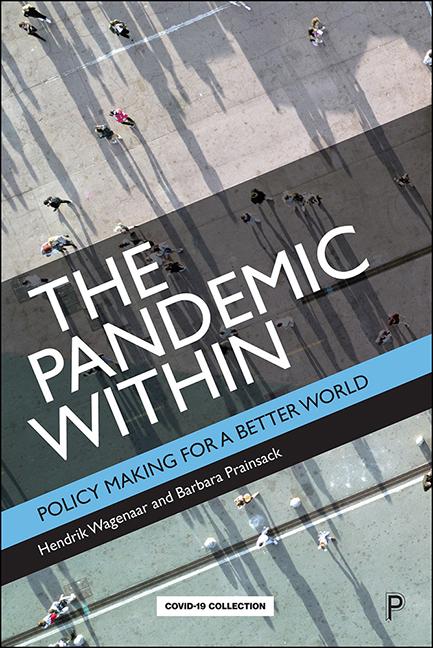Book contents
- Frontmatter
- Contents
- Acknowledgements
- 1 Introduction: The pandemic within
- 2 At home in the world: overcoming the predicament of complexity and hegemony
- 3 Ensuring a well-functioning public infrastructure
- 4 Housing is a public good, not a commodity
- 5 Redefining work and income
- 6 The return of good government
- 7 Real corporate responsibility
- 8 Money as a public good
- 9 Living in the Anthropocene
- 10 Towards an ecological society
- Notes
- References
- Index
9 - Living in the Anthropocene
Published online by Cambridge University Press: 13 May 2022
- Frontmatter
- Contents
- Acknowledgements
- 1 Introduction: The pandemic within
- 2 At home in the world: overcoming the predicament of complexity and hegemony
- 3 Ensuring a well-functioning public infrastructure
- 4 Housing is a public good, not a commodity
- 5 Redefining work and income
- 6 The return of good government
- 7 Real corporate responsibility
- 8 Money as a public good
- 9 Living in the Anthropocene
- 10 Towards an ecological society
- Notes
- References
- Index
Summary
A new moonshot?
‘This is Europe's man on the moon moment’, said EU Commission President Ursula von der Leyen when she announced the European Green Deal in December 2019, just before the COVID-19 crisis hit Europe. Models on economic growth based on fossil fuels are ‘out of date and out of touch with our planet’, the Commission President said. It was time to develop a new regenerative growth strategy that ‘gives more back than it takes away’ (Hutchinson, 2019).
The ‘man on the moon moment’ metaphor is not without problems, for reasons that we will discuss below. But it is instructive in at least one big way: it conveys the sense that something that was deemed inconceivable – namely that a human being would walk on the moon – could be realised. That things that seem beyond human reach can be made possible with human ingenuity, persistence and a leap of faith. We believe that a sustainable society, despite the frequency with which ‘Green New Deal’ (GND), no growth and other concepts are being mentioned in public discourse, is something that is still not conceivable for many people. It is a dream far removed from what most people think is a realistic possibility. This is despite the fact that the elements and architecture of a sustainable society are well known. Ecological economists have laid out what a society and economy that operates within its ecological capacity would look like (Daly, 1997). There are now several detailed blueprints for how to reach a more sustainable society. Yet, we have been unable to make much progress towards achieving these goals. Why is this the case?
The answer to this question has been obscured by the rear-guard struggles with climate change deniers. Sadly, the amount of attention they receive in the media is inversely related to the tenability of their arguments. Another explanation for the fact that, after a decade of public debate, we are still far removed from even the beginning of a sustainable society is that people are afraid of the costs. They fear not only the end of milkshakes and hamburgers, as former US President Trump keeps telling his followers, but also the costs in terms of jobs lost in carbon-heavy industries and sectors.
- Type
- Chapter
- Information
- The Pandemic WithinPolicy Making for a Better World, pp. 125 - 140Publisher: Bristol University PressPrint publication year: 2021

